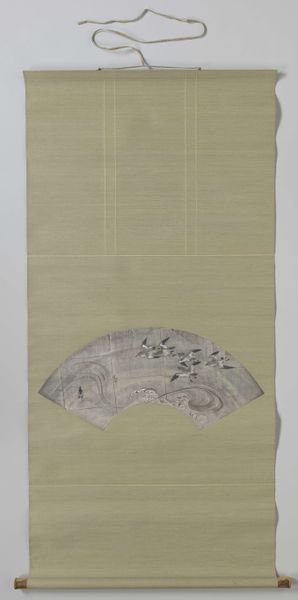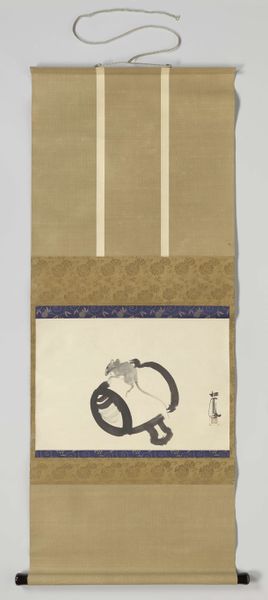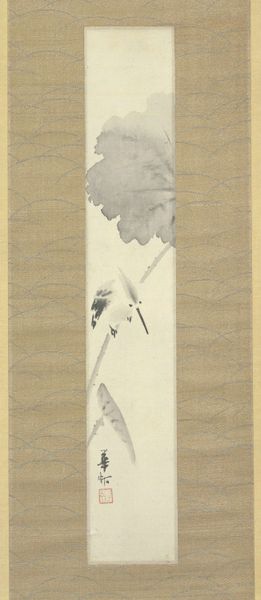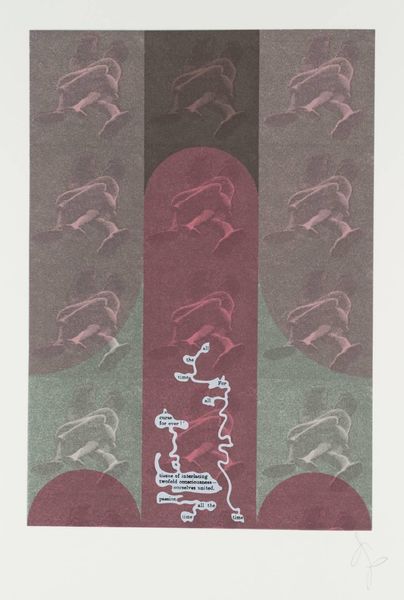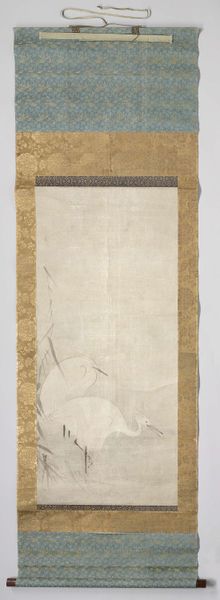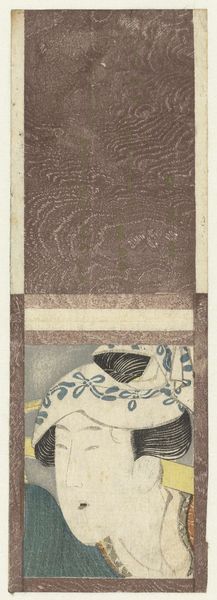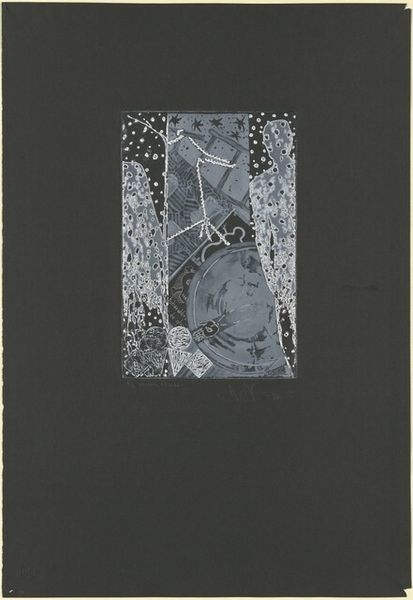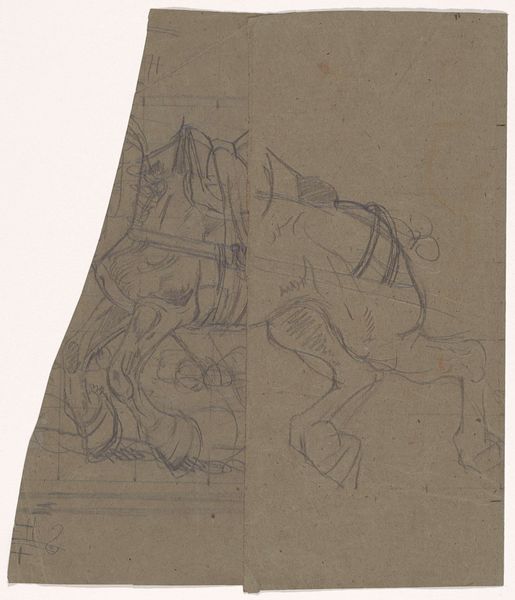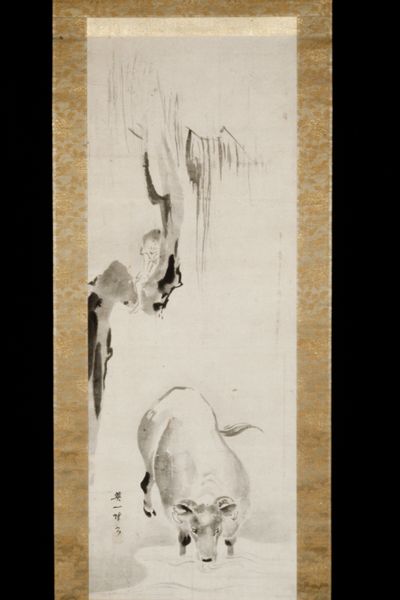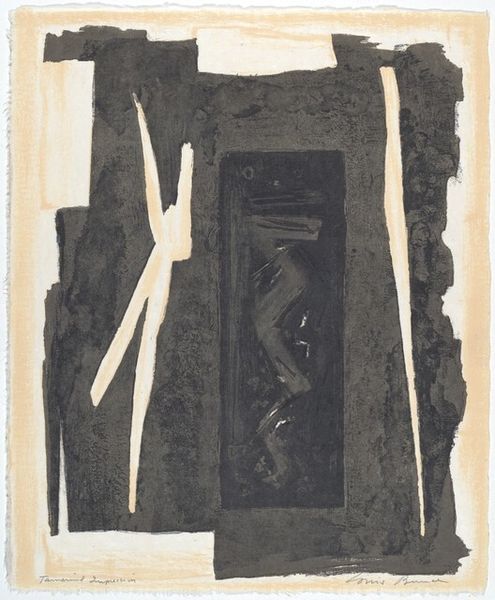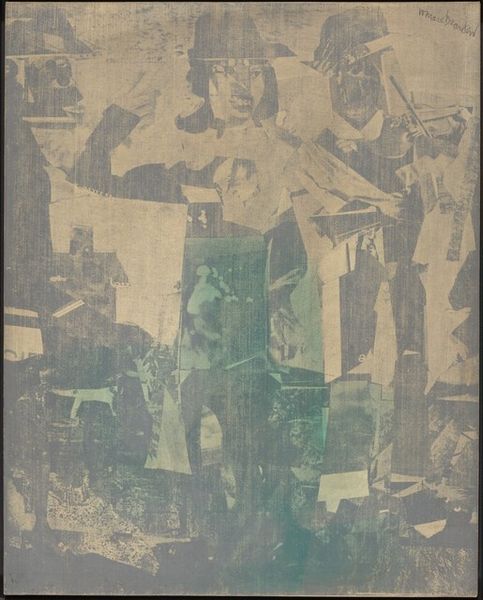
tempera, painting, watercolor
#
organic
#
water colours
#
tempera
#
painting
#
asian-art
#
watercolor
#
watercolour illustration
#
miniature
#
yamato-e
#
calligraphy
Dimensions: width 350 mm, height 1135 mm, width 394 mm, width 443 mm, diameter 40 mm, diameter 24 mm, height 7 cm, width 48 cm, depth 7.5 cm
Copyright: Rijks Museum: Open Domain
This hanging scroll, Quail and Millet, was painted by Tosa Mitsuoki in the 17th century during the Edo period in Japan. As a leading artist of the Tosa school, Mitsuoki revived classical Japanese painting traditions, often drawing inspiration from nature. The artwork presents two quails amidst millet stalks and blue flowers, capturing a serene and intimate moment. In traditional Japanese art, quails, often seen as symbols of courage and affection, appear frequently, as do representations of the natural world. This piece subtly reflects the social context of the Edo period, when there was a renewed appreciation for Japanese identity and cultural heritage, after a long period of internal conflict and relative isolation from the outside world. Quail and Millet invites us to reflect on our connection with nature and the intimate moments that bring us peace. The artwork encourages us to appreciate the simple beauty around us, while also recognizing the historical and cultural values embedded within.
Comments
rijksmuseum about 2 years ago
⋮
Painters of the Tosa School were purveyors of art to the Japanese imperial court. They worked in an extremely meticulous and refined style. Within the confines of the small picture plane, Tosa Mitsuoki portrayed a rich autumnal scene with a pair of quails, the hen of which has caught a cricket. They are surrounded by ears of millet, hibiscus, balloon flowers, and tsuyukusa (Asiatic dayflower).
Join the conversation
Join millions of artists and users on Artera today and experience the ultimate creative platform.
